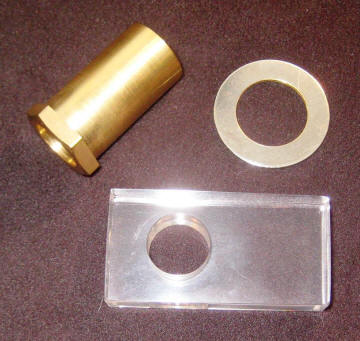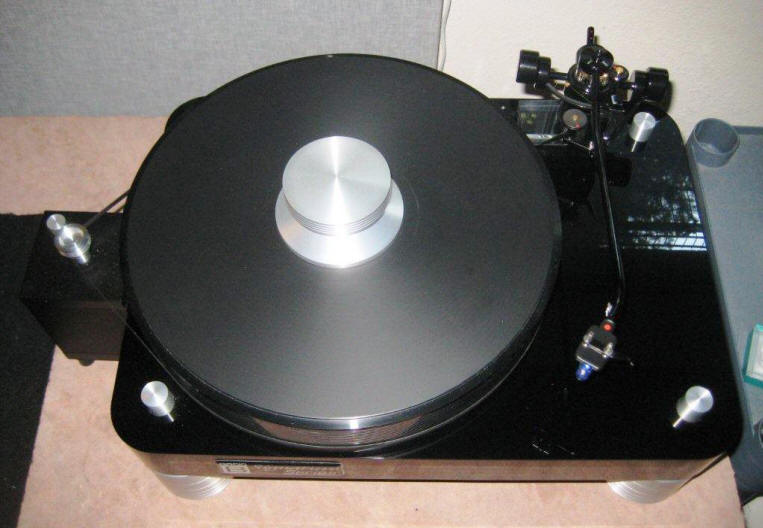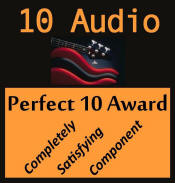When I reviewed the MØRCH DP-8 Anisotropic tonearm and Amazon Referenz turntable in February, time constraits prevented trying the tonearm on a different turntable. Since that review, a Basis 2500 Signature turntable has signed on for an extended visit and both Mehran of SORAsound, the U.S. distributor, and Hans Henrik Moerch (English spelling of the Danish ‘Ø’), the manufacturer, expressed interest in having me audition and evaluate the DP-8 tonearm again, this time using the Basis platform.
The Basis table does not employ a traditional armboard and has but a single mounting hole for a tonearm. They offer the Vector tonearm and do not readily supply armboards for other arms. When I explained to Hans Henrik that the options for mounting a tonearm on the Basis table were limited, he was completely undaunted. He asked me to take a few measurements, including the size of the mounting hole, vertical distance from the top of the plinth to the top of the platter, and horizontal distance from the center of the platter to the center of the mounting hole.

Several weeks later, a custom adapter arrived. Hans Henrik had engineered a simple and elegant solution which included a small clear plexiglass block to raise the arm to the correct height for the thick Basis platter, a finely machined threaded brass insert for the Basis mounting hole, and a washer. Only three simple looking parts! Everything went together perfectly and installation took only about 10 minutes. No tools were required. The gloss-black DP-8 tonearm looked positively stunning on the black table, just as it had on the Amazon table earlier this year.
I listened to three phono cartridges on the MØRCH tonearm: Benz-Micro LP-S, Miyajima Kansui, and ZYX Omega S. The tonearms that serve as references, all reviewed here on 10 Audio, include Graham Phantom, Triplanar VII, SME V, Origin Live Conqueror, and Basis Vector 4 (auditon in progress). The MØRCH DP-8 outperforms all of these highly regarded tonearms in the bass. The DP-8 has greater power, extension into the lowest bass that your audio system can reproduce, and definition than any other tonearm I have heard. It is simply no contest. However, the MØRCH’s extraordinary bass performance never seems unnatural or overdone.
The bass has real character. Clearly audible are subtle fingering of the strings and previously unheard intonation and meaning in the lower frequencies. The bass can growl with near-seismic vibrations. It does not change character with any instrument that is playing at the lowest limits of its range. This extraordinary performance continues without anomaly into the midrange and upper frequencies.
The DP-8 is superb at letting the phono cartridge’s character come through. The slightly thick midrange of the Benz, the wonderfully alive sound of the Omega with its stunningly huge sound stage, and the very consistent sound across all the octaves of the Kansui are all clearly evident. Each cartridge’s unique sound – both positives and negatives – were obvious, but were not imposed on the sound of the other cartridges. This means that the MØRCH tonearm offers a completely neutral platform that enables each cartridge to perform at its absolute best.
I greatly enjoyed the rich rhythms and dynamic POP of the snare drum, and the ethereal chime of the cymbals, and being able to hear the air blowing through the sax on “For Someone Special” from the Doobie Brothers Takin’ It To The Streets LP. This is just one example of wonderful LP sound. All the other LPs that I listened to with the MØRCH tonearm sounded very fine, too.
(Please forgive the window reflection in this image. High-gloss components are hard to shoot.)

When I directly compared the DP-8 to the Vector 4, it was clear that the DP-8 has a bit more bass power and dynamics. The MØRCH also goes significantly deeper into the lowest bass, and has a larger and more focused sound stage. The DP-8’s upper frequencies are a bit smoother, which results from better dampening of resonance and micro-vibration in the MØRCH armwand.
The DP-8 has a very nice feature, one that I have never experienced before. The cuing speed to lower the arm is adjustable. By chance, when I installed the arm and added the supplied silicone fluid to the cueing mechanism, I must have added a greater quantity that I thought. The result is a slow descent of the arm. At first, I was impatient for the music to start playing, but then I got it. I had always been in a rush to get back to the listening seat after moving the cuing lever to the “play” position to be ready for those first notes. With the slow cuing action of the DP-8, I could return to the listening seat at a relaxed pace, and then pick up the remote and be ready to un-mute the preamp as the needle touched down. This may seem like a trivial thing, but it added greatly to the pleasure of using the MØRCH tonearm.
At this level of performance, it is almost a waste of time to discuss the sound in standard audiophile terms, dissecting the bass, midrange, treble, and soundstage. With the MØRCH tonearm and any of the cartridges, I often found it a chore to engage in analytical thinking. The tonearm helps to communicate the emotion and meaning of music so effectively that you are welcomed into the performance and become a participant without realizing that your world has changed. The MØRCH DP-8 Anisotropic tonearm offers performance that is truly at the top of today’s best tonearms.
Overall Rating: 10 LPs

Link to Distributor’s Web site: SORAsound
Link to Manufacturer’s Web site: MØRCH
